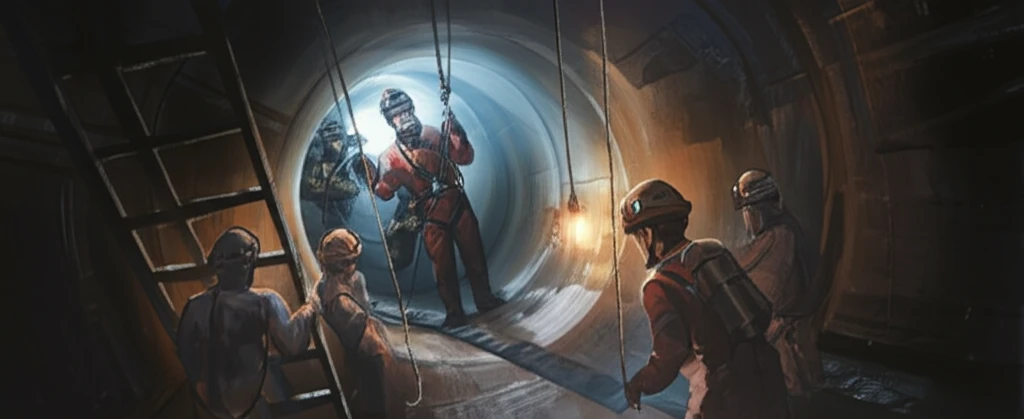
Confined Space Rescue: 5 Steps to Reduce the Risks
"Navigating confined spaces? Understand the REALE system for safer, more effective rescue operations."
Each year, countless workers face the daunting task of entering confined spaces, areas not designed for continuous human occupancy but essential for specific jobs. These spaces, ranging from tanks and silos to pipelines and sewers, present a unique set of hazards, from toxic atmospheres and fire risks to the dangers of engulfment in free-flowing solids or liquids.
The inherent dangers of confined spaces are amplified during rescue attempts. Tragically, many would-be rescuers become victims themselves, succumbing to the same hazards that trapped their colleagues. This grim reality underscores the critical need for a structured, deliberate approach to confined space rescue.
Unlike spontaneous acts of heroism, confined space rescue demands careful planning, specialized training, and a deep understanding of potential risks. Recognizing this, a new five-step procedure has been developed to minimize dangers and maximize the chances of a successful rescue.
The REALE Rescue Procedure: A Step-by-Step Guide

The REALE procedure provides a simplified, broad-based framework for confined space rescue. Adapted from procedures used by professional emergency services, it is designed for on-site or in-house rescue teams, emphasizing the hierarchy of protection: rescuers first, then bystanders, and finally, the casualties. The acronym REALE stands for Reconnaissance, Elimination, Access, Life-saving first aid, and Extrication.
- Reconnaissance of the Rescue Task: This initial step involves a thorough assessment of the situation to identify all potential hazards and understand the scope of the rescue operation. This includes consulting existing risk assessments and confined space permits, questioning the confined space attendant, and conducting a walk-around to spot any overlooked or newly developed hazards. Atmospheric testing is crucial to identify any toxic or oxygen-deficient conditions.
- Elimination or Reduction of Hazards: Once hazards are identified, the next step is to eliminate them completely. If elimination isn't possible, the hazards must be reduced as much as reasonably practicable, following the hierarchy of control. This may involve improving ventilation, flushing liquids, and isolating the confined space from operating plant services and potential product ingress.
- Accessing the Casualty: This step should be undertaken only when it is safe to do so and with the minimum number of rescuers required. Rescue personnel may need to enter the confined space under circumstances that would not normally be permitted for routine work tasks. Proper planning, appropriate control measures, and well-coordinated teamwork are essential.
- Life-Saving First Aid: Immediate first aid or emergency treatment is administered to the casualty as soon as possible. This may involve addressing injuries, fitting PPE such as breathing apparatus, or moving the casualty away from immediate danger. First aid is provided by a trained rescuer while other team members prepare for retrieval.
- Extrication as Required: The final step is removing the casualty from the confined space. Not all rescues require immediate extrication. In a stable environment, treatment can be thorough, and extraction can be carefully planned. However, prompt extrication may be necessary in hazardous conditions. Technical rescue techniques, such as rope access or spinal immobilization, may be needed.
Prioritizing Prevention: The Best Rescue Is No Rescue
While the REALE procedure offers a robust framework for confined space rescue, the most effective strategy is preventing the need for rescue in the first place. Thorough hazard identification, risk assessment, and implementation of control measures are essential for ensuring worker safety and eliminating the risks associated with confined space entry. Remember, the best rescue is the one that never has to happen.
